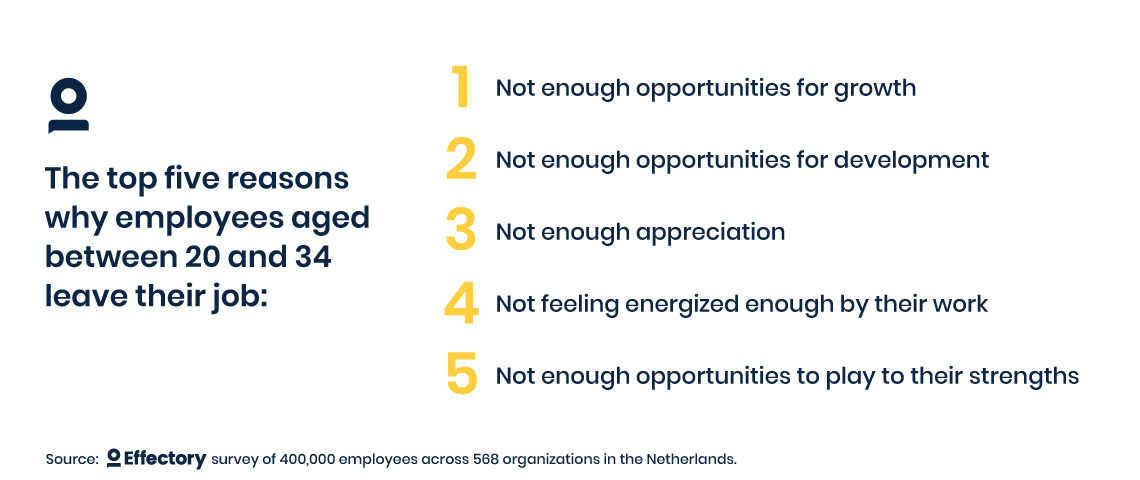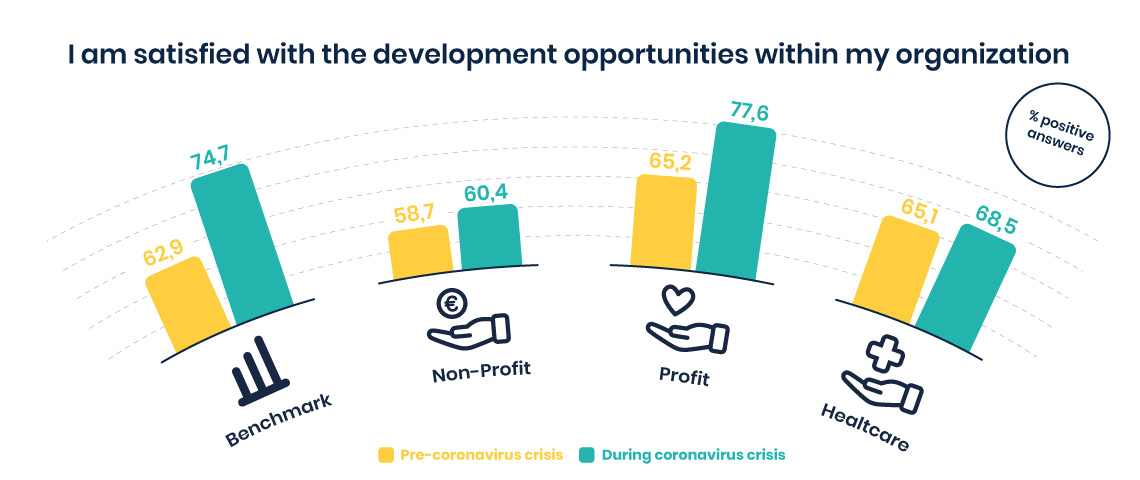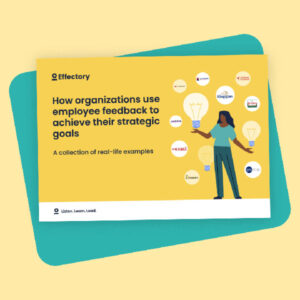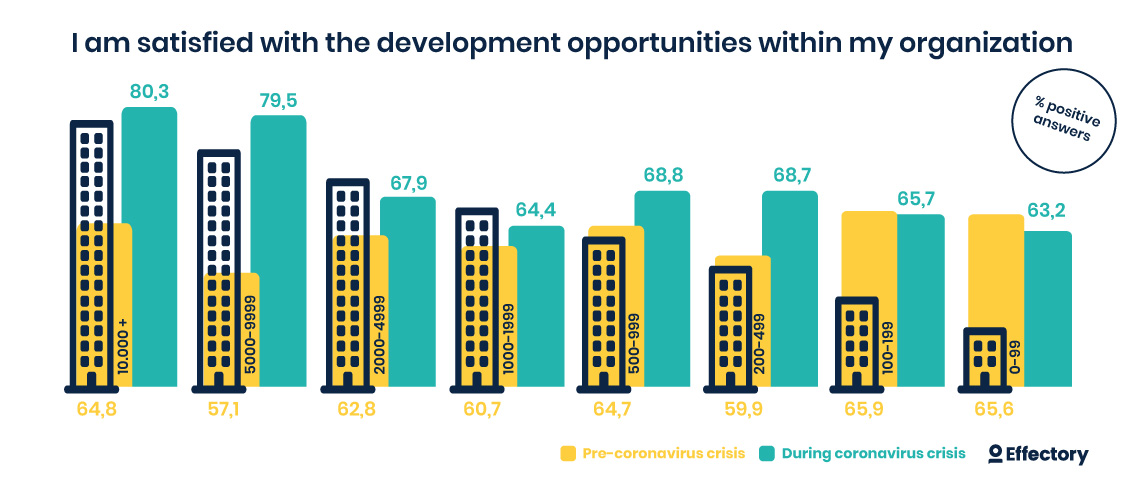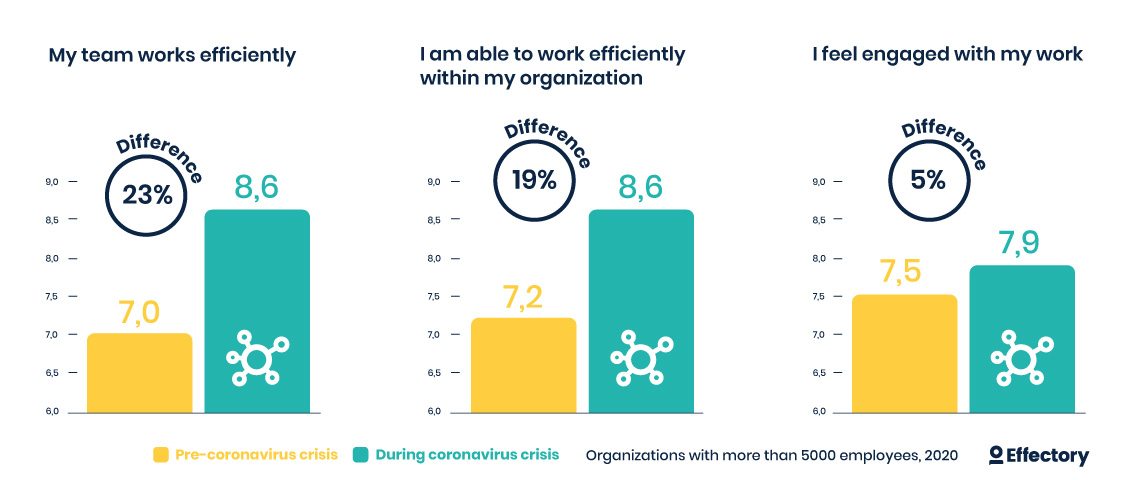Why is it that new employees often leave an organization within two years? The main reason is that they feel there is not enough scope for them to grow, as a recent survey conducted by Effectory has revealed.
You need space in order to grow

Significance and personal growth are basic needs
Opportunities for growth and for development are among the six basic needs of employees. Another of these needs is significance: the feeling of being appreciated and “seen.” Personal growth is also a basic need: tackling new challenges, completing courses and training, and systematically becoming a better version of yourself.
New internal career paths
Until ten years or so ago, traineeships were commonplace, with talented young employees in corporate organizations being groomed to take on management roles in the future. Over the past decade, organizational structures have become flatter, and this has affected the internal career paths available to employees. There is no longer an automatic path from one role to the next. I remember when Fox-IT decided to go down a different path around ten years ago; one of the first employers to take this step. The information security company emphasized to its employees that they could grow by training as a specialist in one of its various fields. The career paths in question came with an increase in salary and a change in title. Our analysis proved that this approach worked. Employees gave the company high scores in relation to the extent to which they were able to develop and grow in their careers.
Achieving senior status
Many organizations have since followed in Fox-IT’s footsteps, carving out both vertical and horizontal career paths for their employees. Unfortunately this does not always solve every problem. Even if you give your employees access to clear growth opportunities, there will always be some who, after a while, start to think: “Well now I’ve got my senior specialist title, I’m off.” And that’s such a shame. Even though these employees may feel that they have gone as far as they can within an organization, there are actually often opportunities for them to do much more in their existing roles. But they don’t always realize that. That’s why we launched a talent management program within our own organization about four years ago. We give our senior employees honest, personalized feedback and help them to see how they could put their talents to even better use. This program helps us to retain new employees for longer.
A radical change in organizational culture
Understanding that your organization can and should continually grow is essential to the organization’s ability to adapt to changing societal and technological landscapes. Organizations often assume that they can stay agile simply by constantly attracting new talent, and it is only the talent that adapts. If you, as an organization, are clinging to old ways of working and if you fail to ensure that your senior management team continues to develop, new employees are left with two choices: stick it out in the tired old system or become disillusioned and leave. If you want to ensure life-long learning for your employees, the organization must keep developing too. You can do this by constantly asking yourself: What is our organization’s purpose? And are we still delivering on our mission statement in the best possible way in these changing times?
Coronavirus crisis altering the development landscape
In the profit sector in particular, development opportunities have increased since the coronavirus crisis began, according to analysis by Effectory. The exception to this is organizations that employ up to 100 people. Employees in these organizations are likely to feel that there has been less scope for them to take new directions because it has been constantly all hands on deck.
Success stories from successful organizations
Discover how successful organizations use employee feedback for retention, engagement, and productivity. Learn essential features and success stories to achieve HR goals!
Receive the inspiration bundleOrganizations employing between five and ten thousand employees saw development opportunities leap up, by as much as 22.4%. How can that be? Perhaps it is due to the fact that many of these employees are currently working remotely. Since spring, the level of bureaucracy within their organizations has fallen rapidly simply by virtue of the circumstances.
Organizations that once revolved around processes and structures, and rules and regulations are now breaking free from many of these shackles. This drives better performance, greater engagement and the sense that there are more development opportunities available. We see these interconnections reflected in the figures. You always need space in order to develop.
Engagement in your work
In a series of ten blogs, Guido Heezen, a Director at Effectory, explains the conditions required to create an engaged workforce. Engagement is the extent to which employees revel in their work. Engaged employees learn quickly and are creative. Engagement is a good predictor for customer satisfaction, low employee turnover, high productivity and profitability.
Book a free demo. See our solutions in action.
Effectory is Europe's Leading provider of Employee Listening Solutions. Schedule a product demo and discover how to enhance your employees' engagement.
Demo request